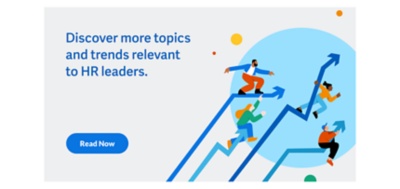Leaders must be able to effectively address those concerns in order to maximize AI adoption. That’s why leaders need to implement a change management approach alongside deploying new AI capabilities.
While employees’ willingness to embrace transformative technology is good news, HR leaders should keep these four research-backed recommendations in mind:
1. Embrace Transparency
Employees deserve to know how and why AI may change their roles and the way their workplace operates. Consider that more than two-thirds of workers (69%) are concerned about their personal data being misused, while 53% are worried that AI could put them out of a job.
HR leaders need to acknowledge these concerns, and then detail what the organization is doing to address them. Right now there is a big opportunity gap. Just 39% of surveyed employees say their employer has been transparent about how AI is being used and how it could affect workers. This is especially true in the Asia-Pacific region: 33% of respondents in Japan noted that their organization has been transparent, a sentiment that’s well below the 39% of European respondents and 40% of North American respondents who feel similarly.
Overall, 64% of workers say that clear guidelines on the use of AI in HR would alleviate their concerns and fears.
Transparency means honesty—including about cost-savings sought by the organization. While clearly a sensitive topic, HR leaders should take note of one surprising Forrester survey finding: two-thirds of employees agree that cost savings due to AI, potentially freeing up dollars to be spent elsewhere, could positively impact their work experience.
While it’s impossible to know exactly how AI will reshape the workforce in the months and years to come, HR leaders should not shy away from sharing what they do know. The benefits of this approach are clear: employees who believe their organization is being transparent around AI use are more likely to feel positive about AI adoption.
2. Ramp Up Training
Naturally, the new and unknown can make people feel uneasy. And the reality is that most employees (66%) don’t really understand how AI works—despite the fact that nearly two-thirds of decision-makers think they do.
Training can help bridge that disconnect. Providing adequate training to up-skill workers is the most consequential factor driving the success of AI use cases in HR. A full 75% of leaders agree that when employees are trained on AI, the technology is demystified, and concern levels drop and engagement rises.
To get there, many organizations will also need to uplevel the knowledge of their leaders. Nearly two-thirds (64%) of leaders say they haven’t been given adequate training to take advantage of AI.
3. Target Communications
A cornerstone of all change management efforts is communication. But savvy HR leaders know that a one-size-fits-all approach is a recipe for disappointment, if not failure. Managing AI-related changes is no exception. The Forrester survey spotlights four personas that leaders should tailor communications to:
- AI skeptics: most common in the IT sector
- AI-cautious believers: most likely to be 26–35 years old and in the healthcare sector
- AI indifferent: most likely to be 36–45 years old
- AI enthusiasts: most likely to be 18–25 years old, and work in sales
Survey results make it clear that each persona responds differently to various types of communication. For example, about half of AI-cautious believers say transparency regarding how AI will or will not eliminate jobs within the organization would alleviate their concerns/fears about AI in HR. Just 18% of those indifferent to AI feel the same way. Conversely, while more than half of enthusiasts and skeptics said communication about how the organization is using AI would alleviate their concerns/fears, barely one-fifth (22%) of cautious believers feel the same way.







